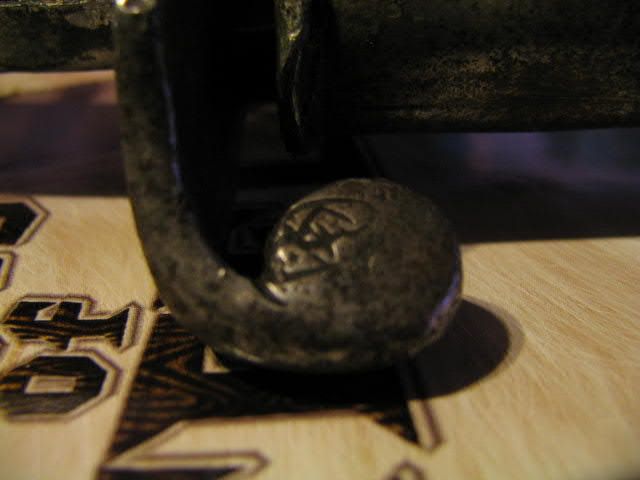
 |
|
|
|
|
#1 |
|
Arms Historian
Join Date: Dec 2004
Location: Route 66
Posts: 10,734
|
Hi Stephen,
Yes, thats exactly the mark! Wow! very nice Khyber!!  All the best, Jim P.S. I think Rick will agree, you should now get a copy of "The Great Game" by Peter Hopkirk...this will give you incredible insight and fascinating history of the volatile regions from which these swords came. |
|
|

|
|
|
#2 |
|
Vikingsword Staff
Join Date: Nov 2004
Posts: 6,378
|
Jim and Stephen thank you both for your fine input gentlemen .
I find the standard model to be a fairly cumbersome weapon ; but perhaps that is just me .  Stephen , might I ask if the quillon on either of your examples carries this mark ; and would anyone here have any insight into its meaning ? I would also suggest Ben Macintyre's fine book *THE MAN WHO WOULD BE KING ; The First American In Afghanistan* for another view of the area and place in time . |
|
|

|
|
|
#3 | |
|
Member
Join Date: Dec 2004
Location: Inland Empire, Southern California USA
Posts: 160
|
Quote:
Thank you for the book suggestions. I will look for them. Yes, the standard model is a little unwieldy and short, certainly compared with the private purchase one. Purhaps meant for hacking in close quarters. I surmise that at this period in history the fire arm had become the important weapon and the sword secondary.  Here is a photo of the mark on my sword, a little off center compared with yours Rick. Best, Stephen* 
|
|
|
|

|
 |
| Thread Tools | Search this Thread |
| Display Modes | |
|
|